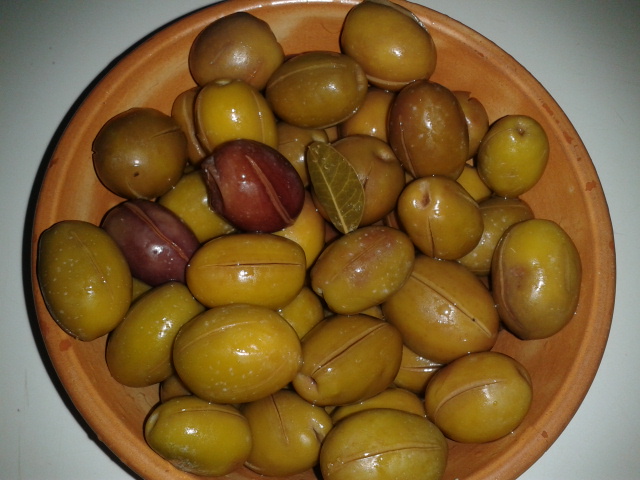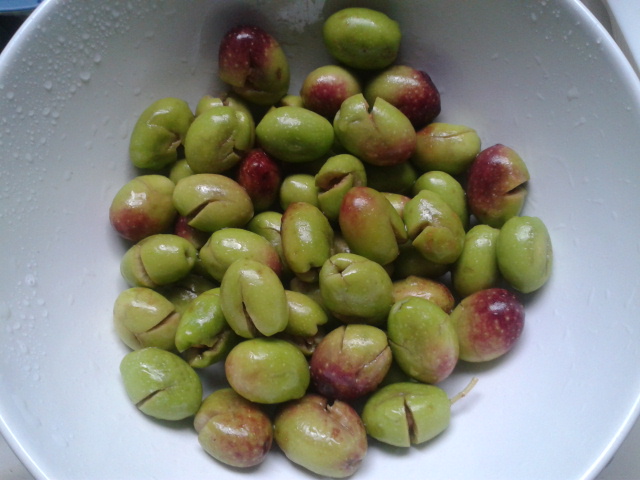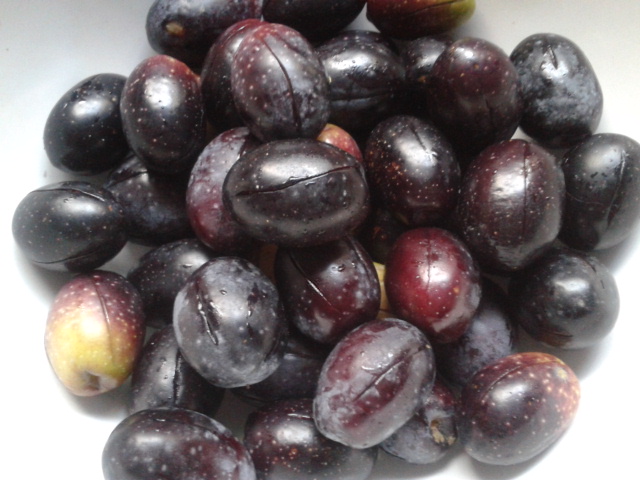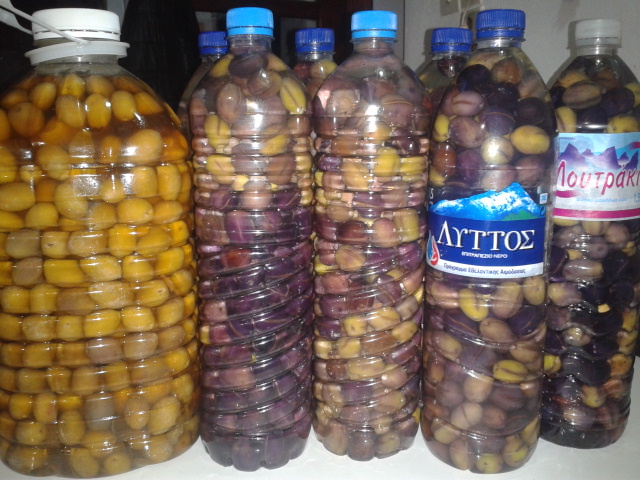
If you are lucky enough to get fresh olives, you can pickle and preserve them yourself in a simple way, like we do here in Ikaria. The method is as old as it is efficient.
The olive was one of the main foods of farmers, fishermen, travelers, shepherds and soldiers for thousands of years. Easily enjoyed anywhere with some bread, it is delicious and filling.

The olive is never missing from the table and is part of every meal, in between meals or with meze.
We use the same olive pickling as for oil production. But it doesn’t matter, with my simple tricks you can pickle and preserve any variety.
We simply sort out the beautiful, fat, undamaged ones for consumption. We differentiate between three types of production. They lose their bitterness at different rates and become edible one after the other. This means we have olives on the table all year round.
By the way, whether green or dark is just a different state of ripeness of the olive and not a different variety.

Tsakistes – Crushed
They become edible the quickest. They are made from the first green olives, which are still a little hard (the black ones would be too mushy). These are carefully crushed, i.e. hit, on a kitchen board with a flat stone, so that the fruit bursts open but the core remains inside :-)
My advice
Squeeze the olives in a plastic bag and wear old clothes outside if possible, as it splashes cruelly and stains.

Character – Cut olives
These are the olives that become edible the second fastest. So right after the bruised ones. You can use fat, green olives as well as ripe, black olives. Just make sure they are firm and stain-free. Using a sharp knife, make three lengthwise cuts all around the olive.

Kolimvites – Floating Olives
They are the last and take the longest to lose their bitterness. They are filled directly into the containers as they are picked.
The next steps are the same for all preservation methods!
Wash out the bitterness
We put the olives in large preserving jars and weigh them down with a plate or flat stone so that they stay well under water. Fill to the brim with fresh water, which you change daily for at least ten days to flush out the bitterness (try the water on the tip of your tongue).
My advice
I prefer to use empty 1.5 liter water bottles. Its spout is so small that the olives just fit in and automatically stay under water without weighing them down. The bottles are then simply cut open for consumption. Just place the lid on top, do not tighten it tightly as air bubbles will form and the bottles could burst.
Spiced brine
Then we make a brine. We boil about a liter of water per kilo of olives with 100g of coarse sea salt (normal fine table salt also works) and various herbs. And here there are no limits to your imagination and of course every housewife makes her own little secret about which herbs she uses.
Here are some ideas: bay leaf, oregano, thyme, fennel herb, fennel seeds, juniper, bay leaves
Let the brine cool. Some women then add lemon or orange slices with peel, garlic wheels and various vegetables such as carrots in slices, cauliflower florets, celery sticks, etc. The vegetables are eaten together with the olives, look beautiful and taste delicious.
My advice
I add the juice of two lemons per liter to the brine so that the olives stay nice and crunchy and don’t become mushy. 1dl of good wine vinegar also works, but lemon juice makes the whole thing fruitier in taste.
Storage
The bottles and containers are filled with the lye along with the herbs. Pour two centimeters of olive oil at the top so that no oxygen gets to the olives. Now close the lid tightly. Store in a cool and dark area. Not in the fridge. You can store the olives this way for up to two years.
My advice
At the top I stuff the bulky spice stalks and a bay leaf to keep the olives submerged as much as possible.
Consumption
The bruised ones can usually be enjoyed after four weeks, the cut ones after six and the floating ones after two months. Remove the olives from the lye, rinse well, drizzle with wine vinegar and good extra virgin olive oil and enjoy.
Kali oreksi! – Bon appetit!
Here are my book tips!
Nice to have!
Questions?
Just write me your questions in the comments below. I’ll answer them as soon as I can :-)






